10 Stylish Ways to Add Kitchen Rugs for a Trendy Culinary Space
In the world of interior design, the kitchen has evolved from being just a functional space to the heart of the home. It's where culinary delights are crafted, memories are made, and conversations flow effortlessly, making it a focal point for family gatherings and socializing alike.

Incorporating stylish kitchen rugs can significantly enhance the aesthetic appeal and comfort of your culinary haven. Not only do they add warmth and texture, but they also inject personality and style into the space. With that in mind, here are ten trendy kitchen rug ideas to elevate your cooking space to new heights of chic sophistication.
Stylish Ways to Add Kitchen Rugs
Vintage-Inspired Persian Rugs
Transport your kitchen back in time with the timeless allure of Persian rugs. These intricately designed rugs boast rich colours and elaborate patterns, adding an instant touch of elegance and charm to any culinary space. Opt for faded vintage pieces for a rustic, lived-in look or vibrant hues to infuse energy into your kitchen decor.
Geometric Patterns
Make a bold statement with geometric-patterned kitchen rugs. Whether it's chevron or herringbone like this Maestro Herringbone Navy Rug, these contemporary designs offer a modern twist to traditional kitchen decor. Choose rugs with contrasting colours to create visual interest, or stick to a monochromatic scheme for a sleek, minimalist appeal.
Natural Fiber Rugs
Bring the outdoors inside with natural fibre rugs such as jute, sisal, or bamboo. These earthy textures add warmth and cosiness to your kitchen and complement a wide range of decor styles, from farmhouse to coastal chic. Their durable construction makes them ideal for high-traffic areas, ensuring longevity and practicality.
Moroccan-Inspired Trellis Rugs
Embrace the exotic allure of Moroccan design with trellis-patterned kitchen rugs. Characterized by their intricate lattice motifs and vibrant colours, these rugs add a touch of global flair to your culinary space. Pair them with neutral cabinetry and sleek countertops to let the rug steal the spotlight as a focal point of the room.
Bohemian Kilim Rugs
Infuse your kitchen with bohemian vibes by incorporating Kilim rugs. These flat-woven textiles feature bold geometric patterns and eye-catching colours, making them the perfect accent piece for eclectic kitchens. Layer them over hardwood floors or tiles for an effortlessly chic look that exudes personality and charm.
Striped Rugs
Add a pop of personality to your kitchen with striped rugs in varying widths and colours. Whether you prefer classic navy and white stripes for a nautical-inspired aesthetic or bold, multicoloured stripes for a playful vibe, these rugs, like this Alya Striped Multicoloured Rug, inject visual interest and character into your culinary space. Pair them with solid-coloured accessories to balance the boldness of the stripes.
Vintage Kilim Runners
Elevate your kitchen decor with vintage Kilim runners that exude timeless elegance and character. These narrow, rectangular rugs feature intricate tribal designs and faded hues, adding a touch of old-world charm to your culinary space. Place them in front of kitchen islands or sink areas to protect high-traffic zones while infusing personality into the room.
Botanical Prints
Bring the beauty of nature into your kitchen with botanical-printed rugs. These rugs add a refreshing burst of colour and vitality to your culinary space, whether it's lush foliage, delicate flowers, or tropical palms. Opt for oversized botanical prints for a dramatic effect or subtle leaf motifs for a more understated look.

Modern Abstract Rugs
Make a contemporary statement with abstract rugs with bold shapes, asymmetrical designs, and vibrant colours. These artistic pieces serve as conversation starters and focal points in your kitchen, injecting personality and creativity into the space. Pair them with minimalist decor and sleek furniture to let the rug stand out as a work of art.
Vintage Braided Rugs
Add a touch of nostalgia to your kitchen with vintage braided rugs that evoke a sense of cosy, rustic charm. These handcrafted textiles feature intricate braided patterns and muted colours, creating a warm and inviting atmosphere in your culinary space. Layer them over hardwood floors or tiles for added comfort and style.
Wrapping Up
Kitchen rugs are functional accessories and powerful design elements that can transform your culinary space into a trendy and stylish haven. Whether you prefer vintage-inspired Persian rugs, geometric patterns, natural fibre rugs, or bohemian Kilim rugs, there's a style to suit every taste and decor scheme. So, unleash your creativity and elevate your kitchen decor with these ten stylish rug ideas that will impress your guests and make your culinary space effortlessly chic.
Choosing the right kitchen rug material
When it comes to selecting the ideal kitchen rug, the material is a crucial factor to consider. The material of your kitchen rug will not only impact its durability and longevity but also its ability to withstand the unique demands of the kitchen environment. Here are some of the most popular and practical kitchen rug materials to choose from:
-
Cotton: Cotton rugs are a popular choice for kitchens due to their absorbency, softness, and easy maintenance. They are often machine-washable, making them a hassle-free option for busy households.
-
Polyester: Polyester rugs are known for their excellent stain resistance and easy cleaning capabilities. They are also durable and can withstand the high-traffic nature of a kitchen.
-
Nylon: Nylon rugs are a great option for kitchens as they are highly durable, stain-resistant, and easy to clean. They are also often more affordable than other synthetic materials.
-
Wool: Wool rugs offer a luxurious and timeless look, as well as exceptional durability. They are also naturally resistant to spills and stains, making them a practical choice for the kitchen.
-
Jute: Jute rugs are a natural and eco-friendly option that can add a rustic, earthy vibe to your kitchen. They are durable and easy to clean, but may require more maintenance than some synthetic materials.
When selecting the material, consider factors such as your kitchen's foot traffic, the likelihood of spills and stains, and your personal cleaning preferences. Carefully weigh the pros and cons of each material to find the one that best suits your needs and lifestyle.

Determining the right size and shape for your kitchen rug
The size and shape of your kitchen rug can have a significant impact on the overall look and feel of the space. Here are some tips to help you determine the perfect dimensions for your kitchen rug:
-
Measure your kitchen: Carefully measure the dimensions of your kitchen, taking into account the available floor space and the placement of your kitchen furniture, such as tables, islands, and cabinets. This will help you determine the appropriate size for your rug.
-
Consider the layout: The shape of your kitchen rug should complement the layout and design of your kitchen. Rectangular rugs work well in linear kitchens, while round or oval rugs can add a softer, more organic feel to a square or L-shaped kitchen.
-
Leave a border: It's generally recommended to leave a few inches of space between the rug and the kitchen walls or cabinets. This creates a visually appealing border and allows for easier cleaning around the edges.
-
Proportion is key: The size of your kitchen rug should be proportional to the overall size of your kitchen. A rug that is too small can look lost in the space, while a rug that is too large can overwhelm the room.
-
Customize if needed: If you can't find a pre-made rug that fits your kitchen perfectly, consider having a custom rug made to your exact specifications. This can ensure a seamless fit and a truly tailored look.
By carefully considering the size and shape of your kitchen rug, you can create a cohesive and visually appealing design that enhances the overall aesthetic of your kitchen.
Matching your kitchen rug with your existing decor
Integrating a new kitchen rug into your existing décor can be a delicate balancing act, but with the right approach, you can achieve a harmonious and visually stunning result. Here are some tips to help you match your kitchen rug with your current décor:
-
Identify your kitchen's colour scheme: Start by taking a close look at the dominant colours and hues present in your kitchen, including the cabinetry, countertops, walls, and other fixed elements. This will help you determine the best colour palette for your kitchen rug.
-
Consider your kitchen's style: Is your kitchen's aesthetic modern, traditional, farmhouse, or something in between? Choosing a rug that complements the overall style of your kitchen will ensure a cohesive and intentional look.
-
Incorporate patterns and textures: While solid-coloured rugs can be a safe choice, don't be afraid to experiment with patterns and textures. Incorporating these elements can add visual interest and depth to your kitchen's design.
-
Balance neutrals with pops of colour: If your kitchen has a neutral colour scheme, consider adding a kitchen rug with a bold, vibrant hue to create a striking contrast. Conversely, if your kitchen is already colourful, a neutral-toned rug can help to balance the space.
-
Experiment with scale and placement: The size and placement of your kitchen rug can also impact the overall look and feel of the space. Play around with different rug sizes and positions to find the perfect fit for your kitchen.
By carefully considering the colour, style, and scale of your kitchen rug, you can seamlessly integrate it into your existing décor, creating a cohesive and visually appealing space.
Kitchen Rugs for Hardwood Floors: Protecting and Enhancing Your Space
Choose kitchen rugs that complement and protect your hardwood floors. Opt for non-slip backing to prevent accidents and protect your floors from scratches. Consider low-pile rugs for easy cleaning and minimal interference with door clearance. Look for water-resistant materials that can withstand occasional spills. A well-chosen rug can add warmth to your kitchen while preserving the beauty of your hardwood floors.

Kitchen Rugs for Under Table: Defining Dining Areas with Style
Enhance your kitchen's dining area with a rug that anchors your table and chairs. Select a size that extends beyond chair legs when pulled out. Opt for durable, stain-resistant materials to withstand food spills. Consider patterns that complement your kitchen decor while hiding crumbs between cleanings. A rug under your table can create a cosy dining nook within your kitchen space.
Kitchen Rugs for Christmas: Festive Flair for the Heart of Your Home
Bring holiday cheer to your kitchen with Christmas-themed rugs. Look for festive colours like red and green or winter motifs such as snowflakes and holly. Choose easy-to-clean materials to handle holiday cooking spills. Consider runner rugs for narrow spaces or small accent rugs near the sink or stove. These seasonal rugs can instantly transform your kitchen into a festive hub for holiday gatherings.
Kitchen Rugs for Dark Floors: Brightening Your Culinary Space
Lighten up your kitchen with rugs that contrast beautifully against dark floors. Opt for light-coloured rugs or those with bright patterns to create visual interest. Consider textured rugs to add depth and dimension to your space. Choose materials that are easy to clean and show less dirt. The right rug can balance the darkness of your floors and create a more inviting atmosphere in your kitchen.

Kitchen Rugs for LVP Floors: Complementing Your Luxury Vinyl Planks
Select rugs that enhance the look of your Luxury Vinyl Plank (LVP) floors while providing additional comfort. Choose rugs with non-slip backing that won't damage your LVP surface. Opt for low-pile options that won't interfere with door clearance. Consider colours and patterns that complement your LVP design. The right rug can add warmth and texture to your kitchen while protecting your LVP floors.
Kitchen Rugs for Sale Near Me: Finding Local Options for Your Home
Discover kitchen rugs available in your local area. Visit home decor stores and kitchen speciality shops to see and feel rugs in person. Look for seasonal sales and clearance events for great deals. Consider local artisans or markets for unique, handmade options. Shopping locally allows you to support your community and find rugs that perfectly fit your kitchen's style and dimensions.

Kitchen Rugs for Brown Cabinets: Coordinating Colours and Textures
Choose rugs that beautifully complement your brown cabinets. Consider earth tones or warm hues that harmonise with the wood. Opt for patterned rugs that incorporate brown to tie the look together. Look for textured options to add visual interest against smooth cabinet surfaces. The right rug can enhance the warmth of your brown cabinets and create a cohesive look in your kitchen.
Kitchen Rugs for Fall: Autumnal Accents for Seasonal Style
Embrace the cosy autumn season with fall-inspired kitchen rugs. Look for warm colours like oranges, reds, and deep yellows. Consider leaf patterns or harvest motifs for a seasonal touch. Choose durable materials that can withstand increased indoor traffic during cooler months. Fall kitchen rugs can transform your space and create a welcoming atmosphere for autumn gatherings.

Kitchen Rugs for In Front of Sink: Comfort and Style Where You Stand
Enhance comfort and safety in your kitchen with rugs designed for sink areas. Opt for water-resistant materials that can handle splashes. Choose cushioned options to provide comfort during long periods of standing. Look for non-slip backing to prevent accidents on wet floors. Consider darker colours or patterns that can hide water spots. A well-chosen sink rug can reduce fatigue and add a decorative touch to your kitchen workspace.
Kitchen Rugs Ideas: Inspiring Designs for Every Style
Explore a variety of kitchen rug ideas to find the perfect match for your space. Consider geometric patterns for modern kitchens or floral designs for a country feel. Experiment with bold colours to create a focal point or neutral tones for a subtle touch. Think about unique shapes like round or oval rugs to break up linear kitchen designs. The right rug idea can transform your kitchen's look and reflect your personal style.

Kitchen Floor Rugs Ideas: Covering Ground with Creativity
Discover innovative ideas for kitchen floor rugs that combine functionality and style. Consider washable, modular rugs for easy cleaning and replacement. Explore indoor/outdoor rugs for durability in high-traffic areas. Try layering different rugs for added texture and interest. Think about seasonal rug rotations to keep your kitchen fresh year-round. Creative floor rug ideas can elevate your kitchen's design and make maintenance a breeze.
Kitchen Area Rugs Ideas: Defining Spaces with Flair
Use area rugs to create distinct zones within your kitchen. Consider a large rug to anchor an eat-in kitchen area. Try coordinating smaller rugs to define cooking, prep, and cleaning zones. Experiment with shapes and sizes to complement your kitchen's layout. Think about colour-coordinated rugs to tie together different areas of your kitchen. Thoughtful area rug placement can improve your kitchen's functionality and enhance its overall design.

Farmhouse Kitchen Rugs Ideas: Rustic Charm for Country-Inspired Spaces
Bring farmhouse flair to your kitchen with rugs that embody rustic charm. Look for natural fibres like jute or cotton for an authentic feel. Consider vintage-inspired patterns or faded designs for a lived-in look. Explore striped or checkered rugs for classic farmhouse style. Think about incorporating text or farm animal motifs for added character. Farmhouse kitchen rugs can create a cosy, welcoming atmosphere and enhance your country-inspired decor.
Kitchen Runner Rugs Ideas: Long Solutions for Narrow Spaces
Maximise narrow kitchen areas with creative runner rug ideas. Explore geometric patterns to add visual interest to long spaces. Consider anti-fatigue runners for comfort in high-use areas. Try washable, low-pile runners for easy maintenance in busy kitchens. Think about colour gradients or borders to create the illusion of a wider space. Well-chosen runner rugs can improve kitchen comfort and add style to challenging layouts.

Kitchen Rugs and Mats: Functional Beauty for Your Culinary Space
Combine style and practicality with a variety of kitchen rugs and mats. Consider gel mats for supreme comfort in food prep areas. Look for decorative rugs to add personality to eating nooks. Explore all-weather mats for entryways from outdoor kitchens. Think about coordinating sets of rugs and mats for a cohesive look. The right combination can enhance your kitchen's functionality and elevate its aesthetic appeal.

Kitchen Rug: Essential Accessory for Comfort and Style
Choose the perfect kitchen rug to enhance your culinary space. Consider size and placement to ensure it fits well in your layout. Look for durable, easy-clean materials suited to kitchen wear and tear. Explore colours and patterns that complement your kitchen decor. Think about texture and pile height for comfort underfoot. A well-chosen kitchen rug can transform your space, adding warmth, style, and functionality.

Kitchen Carpet: Wall-to-Wall Comfort for Culinary Spaces
Explore the benefits of carpeting your kitchen for ultimate comfort and noise reduction. Choose low-pile, stain-resistant options designed for high-traffic areas. Consider indoor/outdoor carpeting for superior durability and easy cleaning. Look for water-resistant materials to handle kitchen spills. Think about neutral tones or subtle patterns that won't overwhelm your kitchen design. Kitchen carpeting can create a cosy atmosphere and provide consistent comfort throughout your culinary space.
People Also Asked
How to put rugs in a kitchen?
Place rugs in high-traffic areas of your kitchen, such as in front of the sink, stove, or island. Ensure they have non-slip backing for safety.
How to place mats in a kitchen?
Position kitchen mats in areas where you stand frequently, like in front of the sink or stove. Use water-resistant, easy-to-clean mats for practicality.
How many rugs should you have in a kitchen?
The number of rugs depends on your kitchen size and layout. Typically, 1-3 rugs work well, placed in key areas like the sink, stove, and island.
What kind of rug to put in a kitchen?
Choose low-pile, stain-resistant rugs made from durable materials like nylon or polypropylene. Opt for dark colors or patterns to hide spills and stains.
Are kitchen rugs a good idea?
Kitchen rugs can be beneficial, providing comfort while standing, reducing slips, and adding style. However, ensure they're easy to clean and maintain.
Should I put a rug by my kitchen sink?
A rug by the kitchen sink is practical, offering comfort while doing dishes and absorbing water splashes. Choose a water-resistant, washable rug.
Is it OK to put a rug under a kitchen table?
Yes, a rug under a kitchen table can define the dining area and protect the floor. Ensure it's large enough to accommodate chairs when pulled out.
How do you secure a kitchen rug?
Secure kitchen rugs with non-slip rug pads, double-sided tape, or rug grippers. This prevents slipping and ensures safety in the kitchen.
Can you put a rug on a kitchen floor?
Yes, you can put a rug on a kitchen floor. Choose durable, easy-to-clean rugs designed for high-traffic areas and potential spills.
What is the difference between a kitchen mat and a rug?
Kitchen mats are typically thinner, more water-resistant, and designed for specific areas like the sink. Rugs are often larger, more decorative, and can cover wider areas.
Do you put a rug in front of a refrigerator?
Placing a rug in front of a refrigerator is optional. If used, choose a narrow, durable runner that won't interfere with the door opening.
How do you properly place a rug?
Properly place a rug by ensuring it's centered in the space, aligned with major furniture pieces, and sized appropriately for the area it's covering.
Can rugs go in the kitchen?
Yes, rugs can go in the kitchen. Choose durable, stain-resistant options that can withstand spills and frequent cleaning.
Should my kitchen rugs match?
Kitchen rugs don't have to match exactly, but they should coordinate in style and color to create a cohesive look throughout the space.
How to place rugs in a kitchen?
Place rugs in high-traffic areas and work zones, such as in front of the sink, stove, and island. Ensure they're secured properly to prevent slipping.
What type of rug is best for a kitchen?
The best kitchen rugs are low-pile, stain-resistant, and easy to clean. Materials like nylon, polypropylene, or indoor/outdoor rugs work well.
What is the best rug pile for kitchen?
Low-pile or flat-weave rugs are best for kitchens, as they're easier to clean and less likely to trap debris or cause tripping hazards.
What size rug is good for a kitchen?
Rug size depends on your kitchen layout. Runner rugs (2'x6' to 2'x8') work well for galley kitchens, while 3'x5' or 4'x6' rugs suit larger areas.
Why do people have rugs in kitchens?
People use kitchen rugs for comfort while standing, floor protection, noise reduction, improved safety, and to add style and warmth to the space.
Can you put a regular rug in the kitchen?
While possible, it's better to use rugs specifically designed for kitchens. These are more durable, stain-resistant, and easier to clean than regular rugs.
Is a rug in the kitchen practical?
Kitchen rugs can be practical if chosen wisely. Opt for easy-to-clean, water-resistant options with non-slip backing for maximum practicality.
Do kitchen rugs get dirty?
Yes, kitchen rugs can get dirty quickly due to spills and foot traffic. Choose dark colors or patterns and washable materials for easier maintenance.
Is it normal to put a rug under kitchen table?
It's increasingly common to put rugs under kitchen tables. Ensure the rug is large enough to accommodate chairs and easy to clean in case of spills.
How to buy rug for kitchen?
When buying a kitchen rug, consider durability, stain resistance, ease of cleaning, non-slip properties, and style that complements your kitchen decor.
Should you have a rug at a kitchen sink?
A rug at the kitchen sink can provide comfort while standing and absorb water splashes. Choose a water-resistant, washable option for practicality.
How do I keep my kitchen rug in place?
Keep kitchen rugs in place using non-slip rug pads, double-sided tape, or rug grippers to prevent slipping and ensure safety.
Where to put rugs in a kitchen?
Place rugs in high-traffic areas and work zones, such as in front of the sink, stove, island, and potentially under the kitchen table.
What shape rug for kitchen?
Rug shape depends on your kitchen layout. Runners work well for galley kitchens, while rectangular or round rugs suit open kitchen spaces.
What should rugs in the kitchen have?
Kitchen rugs should have non-slip backing, be stain-resistant, easy to clean, and made from durable materials suitable for high-traffic areas.
Do rugs look good in kitchens?
Rugs can enhance kitchen aesthetics, adding warmth, color, and texture. Choose styles that complement your kitchen decor for the best look.
Why do you need a kitchen rug?
Kitchen rugs provide comfort while standing, protect floors, reduce noise, improve safety, and add style to the kitchen space.
What can you use instead of a rug pad?
Alternatives to rug pads include non-slip shelf liners, silicone caulk applied in a grid pattern, or felt pads cut to size.
How to stick a rug to the floor?
Stick a rug to the floor using double-sided carpet tape, rug grippers, or by applying a thin line of silicone caulk to the rug's backing.
Are kitchen runners a good idea?
Kitchen runners can be a great idea, providing comfort in high-traffic areas, protecting floors, and adding visual interest to galley kitchens or narrow spaces.
How do I get my kitchen mats to stay in place?
Keep kitchen mats in place using non-slip rug pads, double-sided tape, or by choosing mats with built-in non-slip backing.
What size rug is best under kitchen table?
The rug under a kitchen table should be large enough to accommodate all chairs when pulled out, typically extending 24-30 inches beyond the table edges.
Can any rug be used in kitchen?
While any rug can technically be used, it's best to choose rugs specifically designed for kitchens that are durable, stain-resistant, and easy to clean.
When not to use a rug in the living room?
This question seems unrelated to kitchen rugs. For kitchen-specific advice, consider not using rugs near areas with extreme moisture or heat, like dishwashers or ovens.
Where should kitchen rugs be placed?
Place kitchen rugs in high-traffic areas, work zones, and comfort areas such as in front of the sink, stove, island, and potentially under the table.
How should a rug fit in a kitchen?
A kitchen rug should fit the space without obstructing doorways or appliances. It should be proportional to the area and leave some floor visible around the edges.
How far should a rug go under a table?
A rug should extend at least 24-30 inches beyond the edges of the table to accommodate chairs when pulled out.
Why put a rug in the kitchen?
Rugs in the kitchen provide comfort, floor protection, noise reduction, improved safety, and aesthetic appeal.
Can you put a rug under a stove?
It's not recommended to put a rug directly under a stove due to fire hazards and difficulty cleaning. Place rugs in front of the stove instead.
What kind of backing should a kitchen rug have?
Kitchen rugs should have non-slip, water-resistant backing to ensure safety and durability in the potentially wet kitchen environment.
Should you put a rug in front of the kitchen sink?
A rug in front of the kitchen sink can provide comfort while standing and absorb water splashes. Choose a water-resistant, washable option.
Should you put a rug in a small kitchen?
In small kitchens, a rug can add warmth and style. Choose a small mat or narrow runner to avoid overwhelming the space.
Are kitchen mats necessary?
While not necessary, kitchen mats can provide comfort, safety, and style. They're particularly useful in areas where you stand for long periods.
What rugs go in kitchen?
Rugs suitable for kitchens include low-pile, stain-resistant options made from durable materials like nylon or polypropylene, as well as indoor/outdoor rugs.
How do you put a rug in an L shaped kitchen?
In an L-shaped kitchen, use multiple smaller rugs or a custom L-shaped rug to fit the space. Place rugs in high-traffic areas and work zones.
How to place a kitchen rug?
Place kitchen rugs in high-traffic areas and work zones, ensuring they're secured with non-slip backing and don't obstruct appliance doors or cabinets.
What kind of rugs look good in a kitchen?
Kitchen rugs that combine style and practicality are ideal. Flat-weave rugs with low pile heights are excellent choices, as they're easy to clean and don't trap food particles. Opt for rugs with bold patterns or geometric designs to add visual interest while hiding potential stains. Indoor-outdoor rugs are also popular for kitchens due to their durability and resistance to moisture.
Is a rug in the kitchen a good idea?
A rug in the kitchen can be a great idea when chosen thoughtfully. It adds warmth and comfort to a space often dominated by hard surfaces. Rugs can also reduce noise from foot traffic and provide cushioning for long periods of standing. However, it's crucial to select a rug that's easy to clean and water-resistant to withstand the kitchen's demands.
How do I choose a kitchen rug?
When choosing a kitchen rug, prioritize durability and ease of maintenance. Look for materials that are stain-resistant and can withstand frequent cleaning. Consider the size and layout of your kitchen to determine the best placement and dimensions. Choose colors or patterns that complement your kitchen's decor while being practical enough to hide minor spills and stains.
What kind of rug do you put under a kitchen table?
For under a kitchen table, opt for a rug that's large enough to accommodate chairs when pulled out. Flatweave or low-pile rugs are ideal as they allow for easy chair movement. Choose a rug with a durable, stain-resistant material like polypropylene or treated natural fibers. Patterns or darker colors can help conceal crumbs and spills common in dining areas.
Does kitchen rug go in front of sink or stove?
Kitchen rugs are often placed in high-traffic or standing areas. Positioning a rug in front of the sink is common as it provides comfort during dishwashing and food prep. Placing a rug in front of the stove can be practical but requires extra caution due to fire hazards. If using a rug near the stove, ensure it's flame-resistant and non-slip.
What is the best material for a kitchen rug?
The best materials for kitchen rugs are those that offer durability and easy maintenance. Polypropylene and nylon are excellent synthetic options, known for their stain resistance and easy cleaning. For natural fibers, treated cotton or wool blends can work well. Bamboo or sisal rugs offer eco-friendly alternatives with good durability. The key is to choose a material that's water-resistant and quick-drying.
Do you put a rug in front of a refrigerator?
Placing a rug in front of a refrigerator is less common but can be beneficial. It can catch spills or drips when accessing the fridge and provide comfort while standing. If you choose to place a rug here, opt for a narrow, non-slip option that won't interfere with the refrigerator door's operation. Ensure the rug is easily movable for cleaning underneath.
Why do people have rugs in the kitchen?
People use rugs in kitchens for both practical and aesthetic reasons. Rugs provide comfort underfoot, especially on hard surfaces like tile or hardwood. They can reduce fatigue during long periods of standing while cooking or cleaning. Aesthetically, rugs add warmth and color to the kitchen, helping to tie the room's decor together. They also help dampen noise and can protect flooring from wear and tear.
Why do people put rugs under kitchen table?
Rugs under kitchen tables serve multiple purposes. They define the dining area within the kitchen, creating a visual separation. These rugs protect the floor from chair scratches and food spills. They also add comfort underfoot and can absorb sound, making mealtime conversations more pleasant. Aesthetically, a well-chosen rug can enhance the dining area's ambiance and complement the kitchen's overall design.
What is the best washable rug?
The best washable rugs combine durability with easy care. Machine-washable rugs made from synthetic fibers like polyester or nylon are top choices. Look for rugs with reinforced edges and non-slip backing that can withstand frequent washing. Some brands offer rugs with removable covers for easy laundering. The ideal washable rug should maintain its shape and color after multiple washes while effectively resisting stains and wear.
Do you need a rug in your kitchen?
While not essential, a rug in the kitchen can be a valuable addition. It offers comfort and support during long cooking sessions, reducing fatigue on hard floors. Rugs can also enhance safety by providing a non-slip surface in potentially wet areas. From a design perspective, a rug can tie together the kitchen's aesthetic, adding warmth and personality to the space. However, the decision ultimately depends on your kitchen's layout, your personal style, and maintenance preferences.
What is the best type of rug for a kitchen?
The best type of rug for a kitchen is a low-pile, synthetic fiber rug. Materials like nylon or polypropylene are ideal as they're water-resistant, easy to clean, and durable. Look for rugs with non-slip backing to ensure safety in this high-traffic area.
What rug should I put in my kitchen?
Choose a machine-washable rug for your kitchen. Indoor/outdoor rugs are excellent options as they're designed to withstand moisture and heavy use. Consider patterned designs to hide stains and darker colors to mask dirt between cleanings.
Should you have a rug in front of the kitchen sink?
Yes, a rug in front of the kitchen sink can be beneficial. It provides comfort for long standing, absorbs water splashes, and protects your floor. Opt for a water-resistant, cushioned mat with anti-fatigue properties for optimal comfort and functionality.
How to style rugs in a kitchen?
Style kitchen rugs by coordinating colors with your decor. Use runner rugs in galley kitchens or in front of counters. For open kitchens, try a larger area rug under the dining table. Layer smaller rugs in work zones for a cohesive look. Ensure rugs complement, not overwhelm, your kitchen design.
Are kitchen rugs worth it?
Kitchen rugs are definitely worth it. They add comfort to hard floors, reduce noise, and can prevent slips. They also protect your flooring from scratches and spills. Additionally, rugs can inject color and style into your kitchen, making the space more inviting and personalized.
What kind of rug is in style?
Currently, popular rug styles include vintage-inspired patterns, bold geometrics, and natural fiber rugs. Sustainable materials like recycled plastics are trending. For kitchens specifically, washable, flat-weave rugs with modern designs or subtle textures are in vogue, offering both style and practicality.
Related Blog Posts
Vintage Kitchen Trends You’ll Fall In Love with
7 Kitchen Island Design Tips to Make Your Kitchen Irresistible
8 Kitchen Design Tips to Make Your Kitchen Look Brilliant
Related Rug Collections




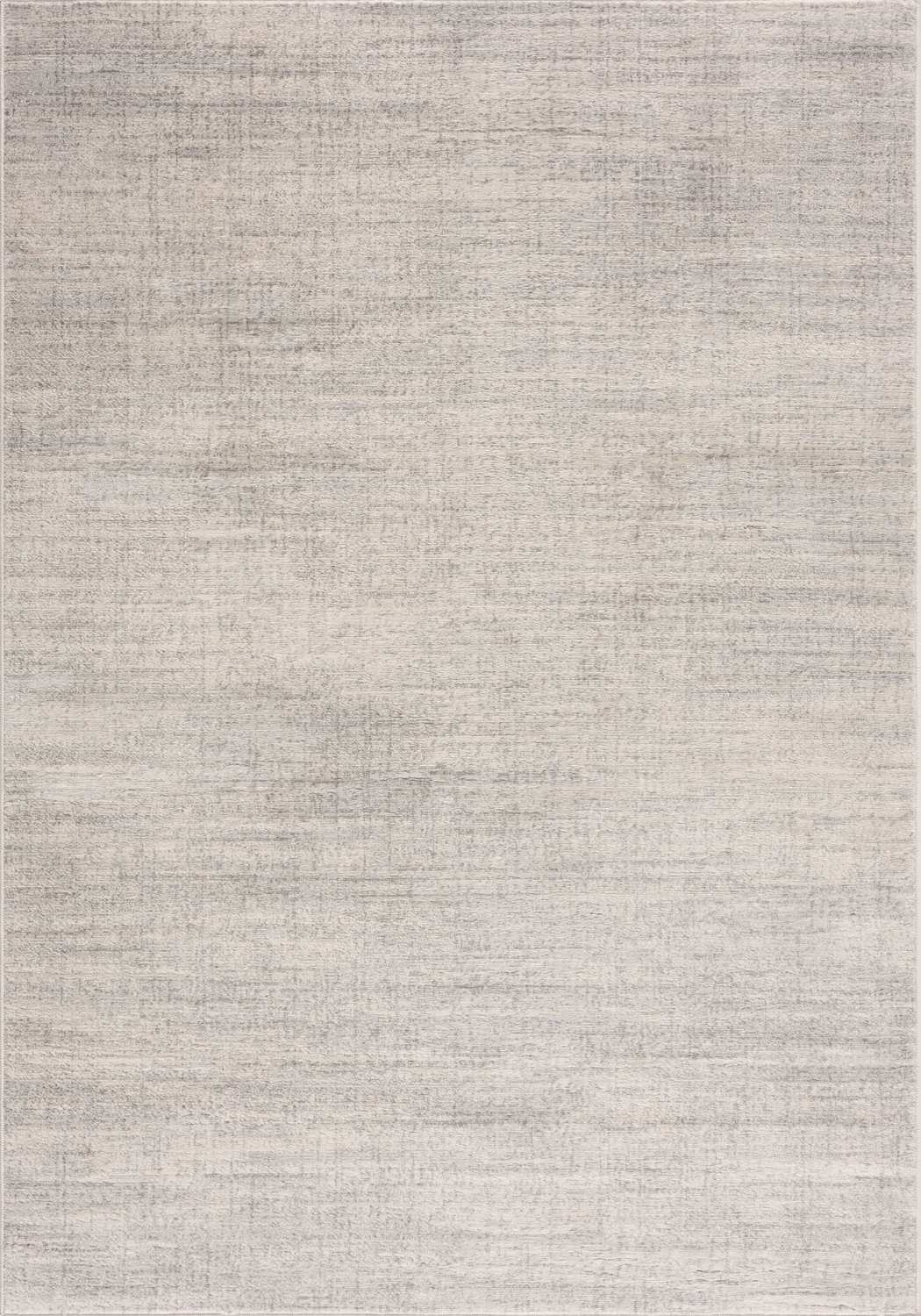
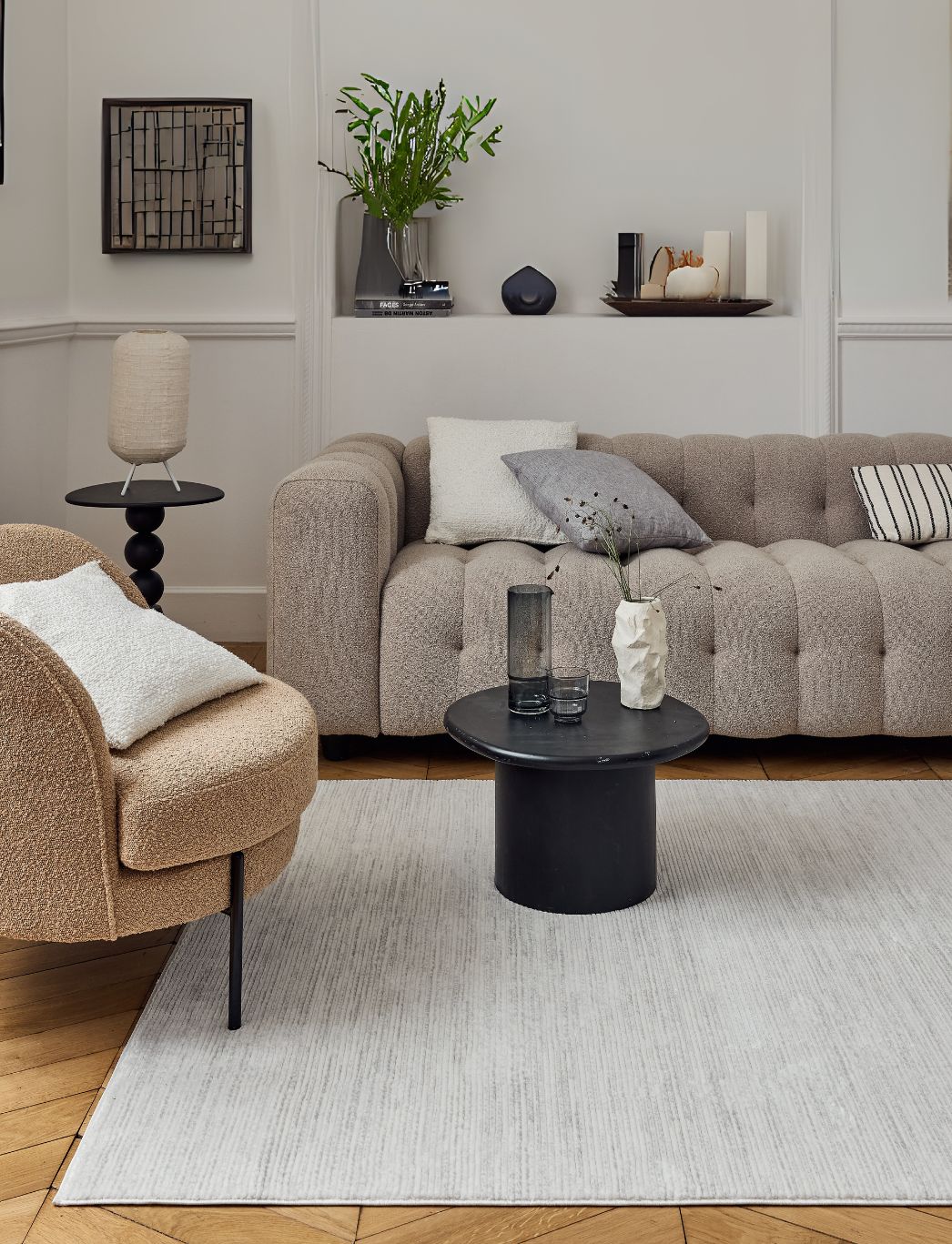
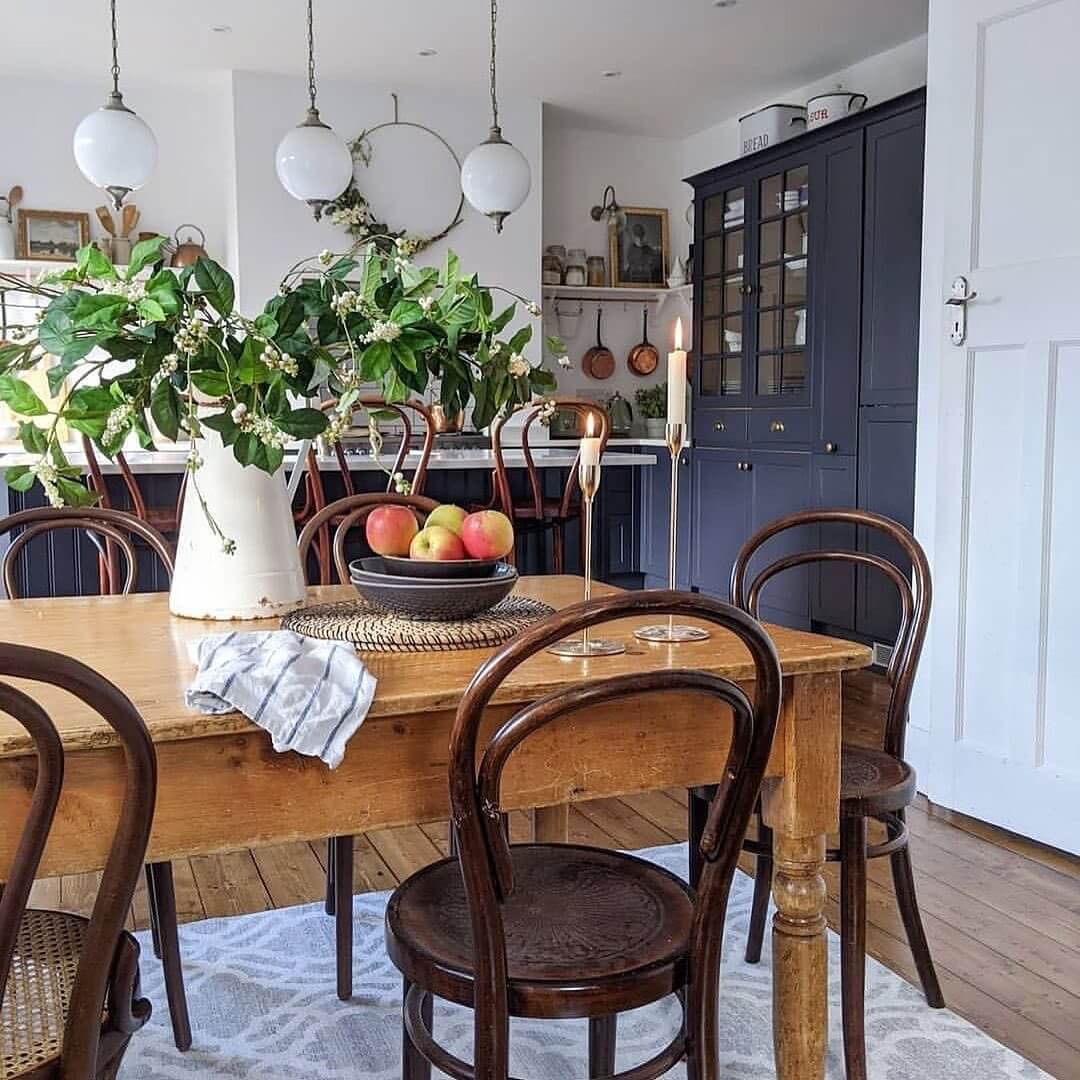
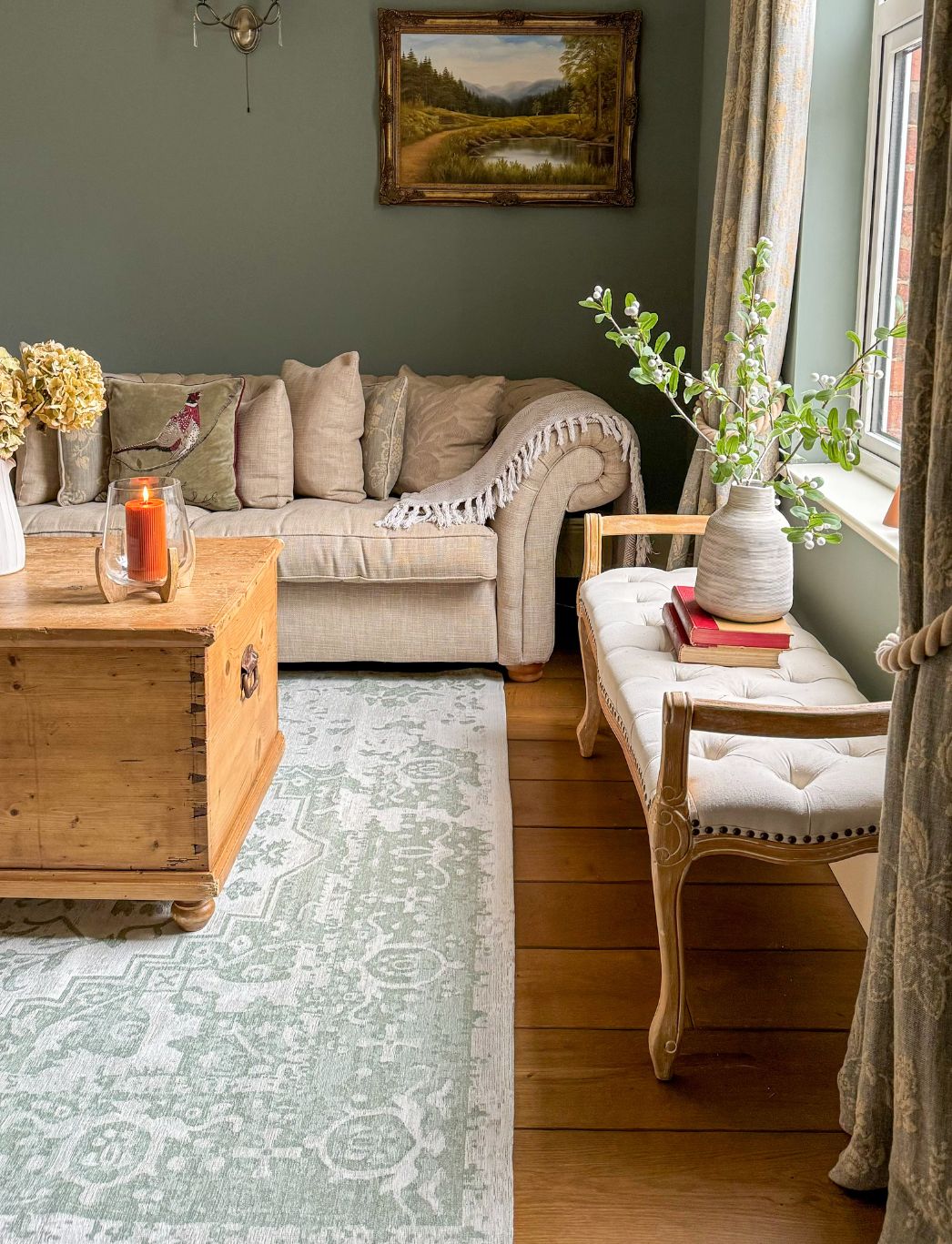
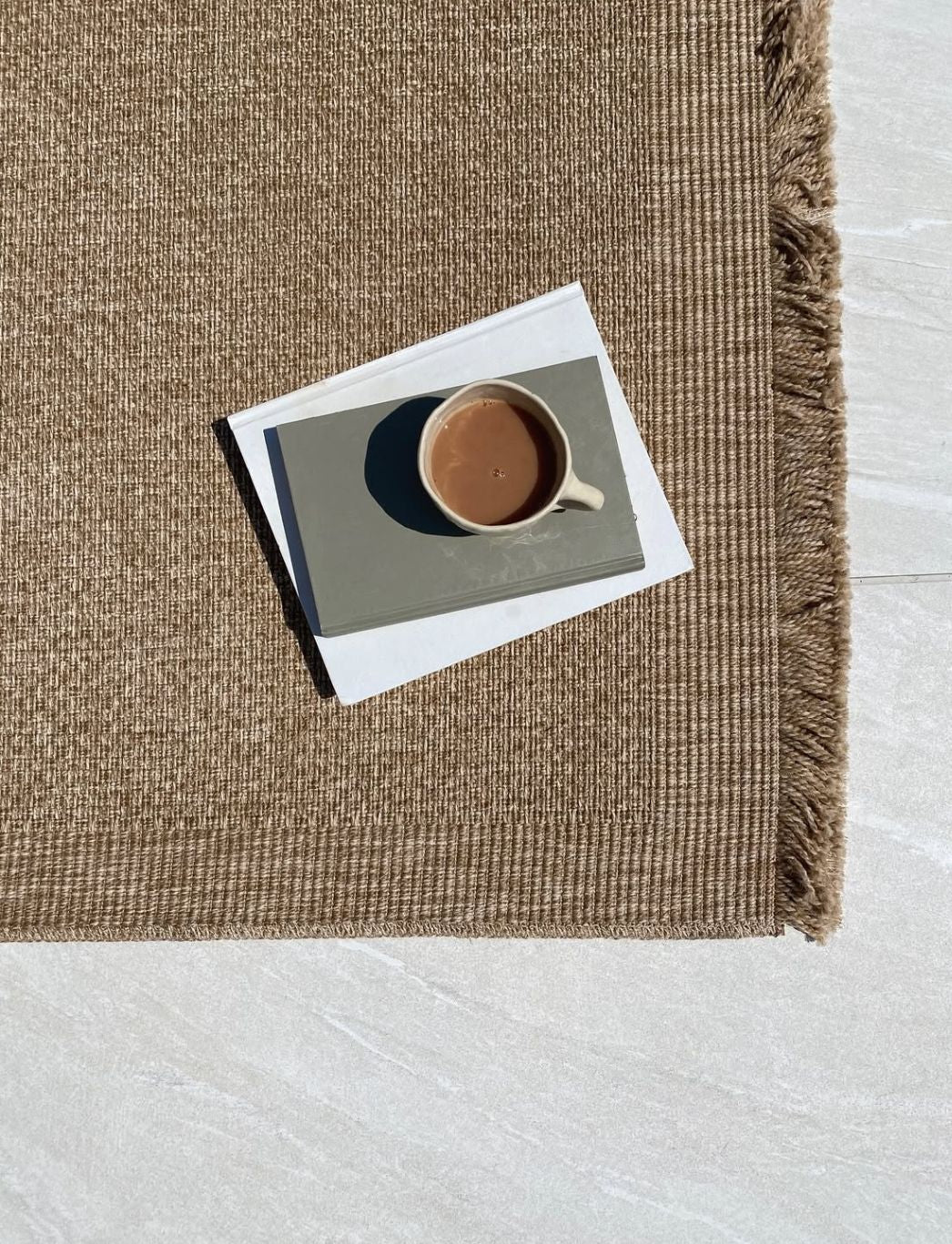
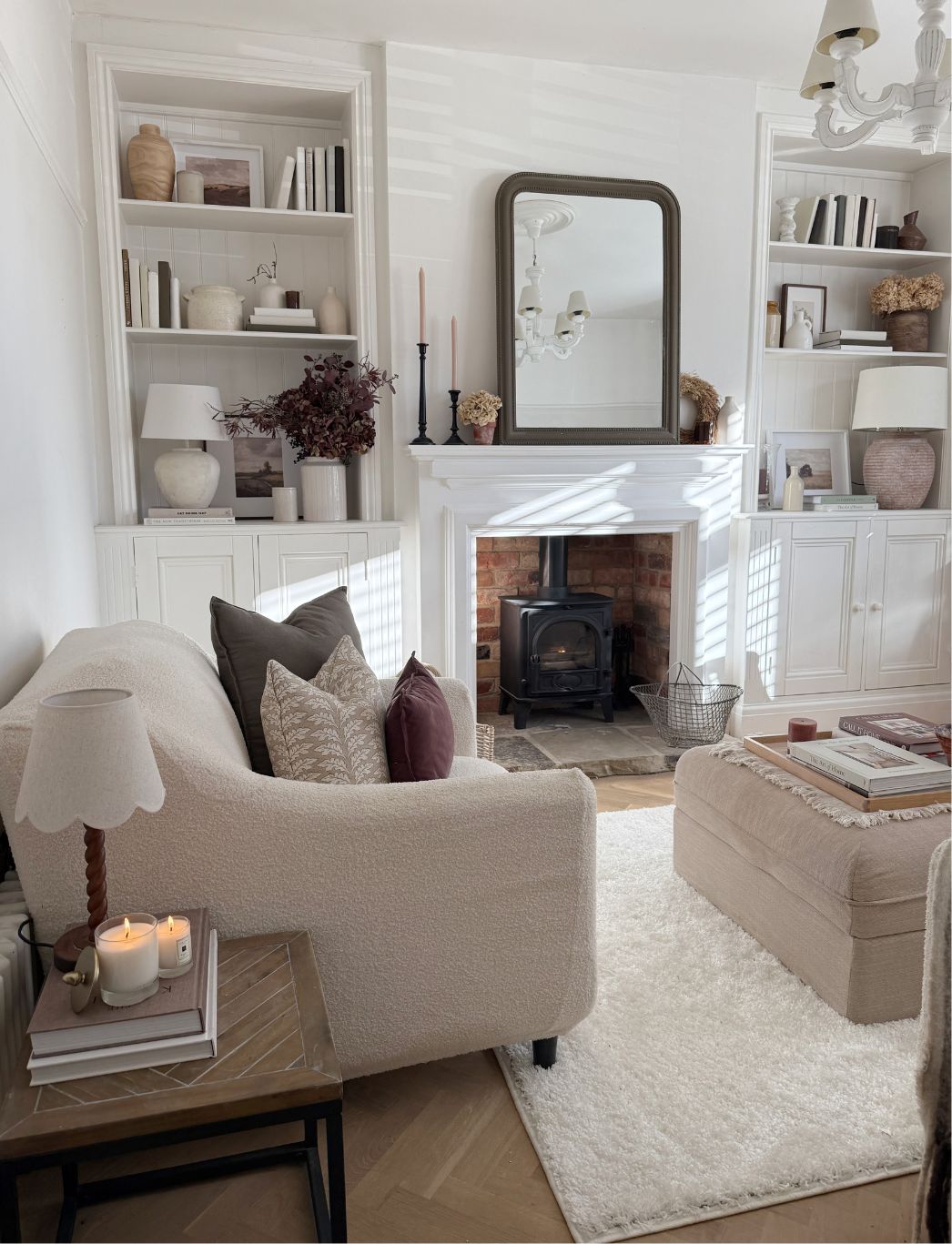
Leave a comment